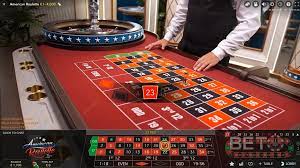Slot machines, often the iconic centerpiece of any casino floor, bolaxx-pro.com are more than just colorful machines with flashing lights. They’re a blend of psychology, technology, and luck, creating a captivating and fast-paced experience that has drawn players for decades. Whether you’re a seasoned gambler or a casual player, slot machines offer an intriguing combination of entertainment, excitement, and potential rewards. But what makes them tick? Let’s take a closer look at the world of slots.
A Brief History of Slot Machines
The first slot machine, known as the “Liberty Bell,” was created by Charles Fey in 1895 in San Francisco. This mechanical machine featured three spinning reels with symbols such as bells, horseshoes, and spades. Players would insert a coin, pull a lever, and watch the reels spin in hopes of landing a winning combination. In its simplest form, the machine would payout a small sum when three identical symbols aligned.
Over time, slot machines evolved, becoming more sophisticated and introducing new features. In the 1960s, electromechanical machines emerged, adding lights and sounds to enhance the experience. With the advent of digital technology in the 1990s, slots transitioned to video screens, offering players engaging graphics, animations, and more complex game mechanics.
How Slot Machines Work
Slot machines, whether physical or digital, are based on random number generators (RNGs) that ensure each spin is entirely random and independent of the last. This means that there’s no way to predict or influence the outcome of a spin, making slots purely a game of chance.
- Reels and Paylines: Traditional slot machines feature three to five spinning reels, each adorned with various symbols. In older models, winning combinations were typically formed by aligning identical symbols across a single payline. However, modern video slots may have multiple paylines (sometimes hundreds) that offer various ways to win. These paylines can run horizontally, vertically, diagonally, or even in zigzag patterns.
- Random Number Generator (RNG): The RNG is at the heart of modern slot machines, ensuring fairness and unpredictability. Each time you press the spin button, the RNG generates a random combination of symbols. This is why winning or losing is never predictable, and every spin is a fresh start.
- Betting and Payouts: Players can place different bet amounts, affecting the size of potential payouts. Most slots feature multiple betting options, allowing for a range of bet levels to suit different players’ budgets. The payout for each combination is typically displayed on the machine’s paytable, which outlines how much each combination is worth.
Types of Slot Machines
While all slot machines share the same core mechanics, there are several different types of slots that appeal to various player preferences:
- Classic Slots: These are the simplest and closest to the original slot machine format. They typically feature three reels and a small number of paylines. Classic slots are known for their straightforward gameplay, often with fruit symbols, bars, and sevens.
- Video Slots: These modern versions are powered by video screens and offer a more immersive experience. Video slots often come with vibrant graphics, exciting animations, and soundtracks that make the game more engaging. They may also include bonus features such as free spins, multipliers, and mini-games that add layers of complexity.
- Progressive Slots: These machines are linked together across a network, and a small portion of every player’s bet goes toward a growing jackpot. The jackpot continues to increase until one lucky player hits the winning combination. Progressive jackpots can reach life-changing amounts, making them highly attractive to players.
- 3D Slots: A newer innovation, 3D slots take video slots to the next level with stunning visual effects. These games are often based on unique themes like adventure, fantasy, or even movies, and they offer fully immersive environments with three-dimensional animations.
- Bonus Slots: These slots feature interactive bonus rounds triggered by specific symbol combinations. Players can engage in side games within the slot itself, providing extra opportunities for big wins.
The Psychology of Slot Machines
One of the reasons slot machines are so appealing is the psychology behind them. Slots are designed to keep players engaged with a mix of rewards, excitement, and anticipation. Here are some key psychological elements that make slots so compelling:
- Variable Rewards: Slot machines utilize a variable reward system, meaning wins are not consistent but come at unpredictable intervals. This unpredictability keeps players on edge, as they’re never sure when the next payout will occur. This mechanism triggers the release of dopamine, the brain’s pleasure chemical, making the experience addictive.
- Near Misses: Players often experience “near misses,” where the reels stop just shy of a winning combination. This creates a sense of hope and reinforces the desire to keep playing, despite the fact that near misses are just as random as any other outcome.
- Entertainment Value: With their bright lights, catchy music, and engaging themes, slot machines are designed to be entertaining experiences in themselves. The entertainment aspect often overshadows the gambling element, making them accessible to casual players who may not be focused solely on winning money.
- The Allure of Jackpot Wins: Progressive slots in particular are designed to create a sense of potential wealth. The idea of hitting a life-changing jackpot, even though it’s incredibly rare, is a powerful motivator that draws people to these games.
The Future of Slot Machines
As technology advances, the future of slot machines seems to be heading toward even more immersive and engaging experiences. Virtual reality (VR) and augmented reality (AR) could soon play a role in revolutionizing how players interact with slot machines, allowing them to experience slots in fully immersive environments. Additionally, with the rise of online casinos, players can now access their favorite slot games from the comfort of their homes, offering even greater convenience and variety.
The use of artificial intelligence (AI) may also see a rise in personalized slot experiences, where machines adapt to the player’s preferences and habits, creating a more tailored and unique experience. Furthermore, mobile slots are continuing to grow in popularity, with many players opting to enjoy their favorite games on smartphones and tablets.
Conclusion
Slot machines have come a long way from their humble beginnings, evolving into a staple of the casino world and a popular form of entertainment for millions of people. Whether you’re playing in a brick-and-mortar casino or spinning the reels online, the fundamental appeal of slots remains the same—simple yet exciting gameplay, the thrill of the unknown, and the potential for big wins. The allure of the spinning reels continues to captivate the imagination of players worldwide, and it seems that the future of slots will only grow more innovative and exhilarating as technology continues to advance.

